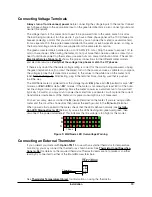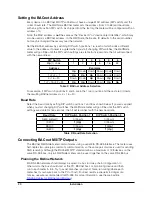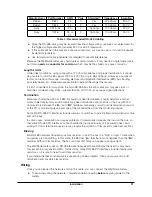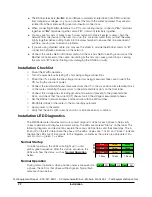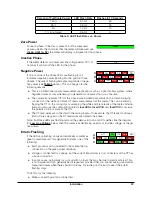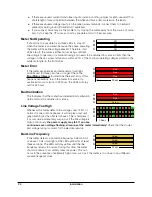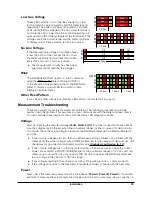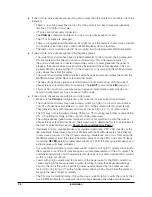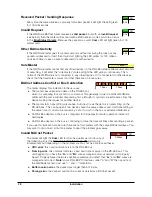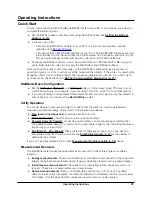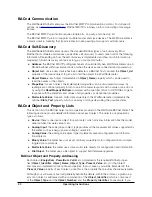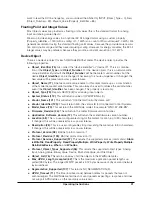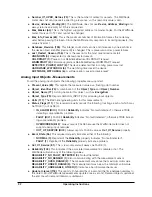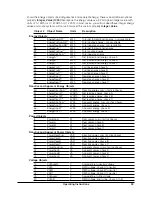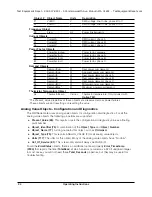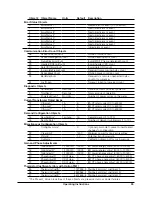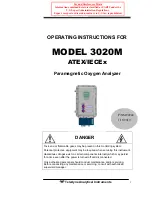
20
Installation
Setting the BACnet Address
Every device on a BACnet MS/TP subnet must have a unique MAC address (DIP switch) and the
correct baud rate. The WattNode BACnet meter sets the address (from 0 to 63) and baud rate
with an eight position DIP switch. As shipped from the factory, the meter will be configured with an
address of 0.
Note: the MAC address is
not
the same as the “Device ID” or “device object identifier”, which may
also be used as a BACnet address. In the WattNode, the Device ID defaults to the serial number,
but may be changed if necessary over the network.
Set the BACnet address by switching DIP switch positions 1-6, each of which adds a different
value to the address. If power is applied when you start changing DIP switches, the WattNode
meter will go offline until the DIP switch settings are stable for five seconds, then it will reconnect
with the new address.
DIP Switch
1
2
3
4
5
6
Up
(1) Value
1
2
4
8
16
32
Address
Examples
1
Up
Down Down Down Down Down
1 + 2 + 4 = 7
Up
Up
Up
Down Down Down
4 + 16 = 20
Down Down
Up
Down
Up
Down
1 + 2 + 16 + 32 = 51
Up
Up
Down Down
Up
Up
Table 2: BACnet Address Selection
For example, if DIP switch positions 3 and 5 are in the 1 (up) position and the rest are 0 (down),
the resulting BACnet address is 4 + 16 = 20.
Baud Rate
Select the baud rate by setting DIP switch positions 7 and 8 as shown below. If power is applied
when you start changing DIP switches, the WattNode meter will go offline until the DIP switch
settings are stable for five seconds, then it will reconnect with the new baud rate.
Baud Rate
DIP Switch Position 7
DIP Switch Position 8
9,600 (default)
0 (Down)
0 (Down)
19,200
1 (Up)
0 (Down)
38,400
0 (Down)
1 (Up)
76,800
1 (Up)
1 (Up)
Table 3: Baud Rate Selection
Connecting BACnet MS/TP Outputs
The BACnet WattNode meter communicates using a serial EIA RS-485 interface. The meter uses
half-duplex two-wire (plus common) communication, so the same pair of wires is used for sending
AND receiving. Although the BACnet MS/TP standard allows a maximum of 128 devices on the
same RS-485 bus, only 64 WattNode meters can be used together on the same RS-485 bus.
Planning the BACnet Network
EIA RS-485 networks should always be wired in a bus (or daisy-chain) configuration. In
other words, the bus should start at the PC, BACnet host, or monitoring device and then
run to each meter in turn. Try to avoid branches, and avoid home-run wiring (where each
meter has its own wire back to the PC or host). For best results, especially for longer dis-
tances, use wire recommended for RS-485 (for more information, see the web article
RS-485 Cables for BACnet and Modbus
).














